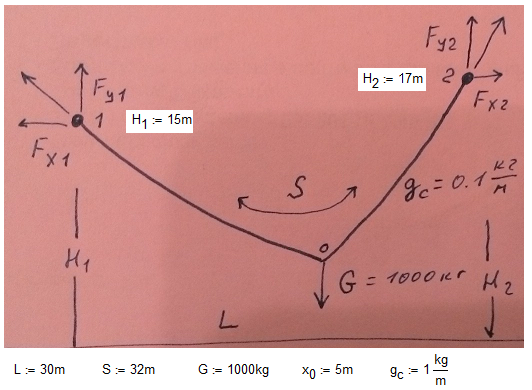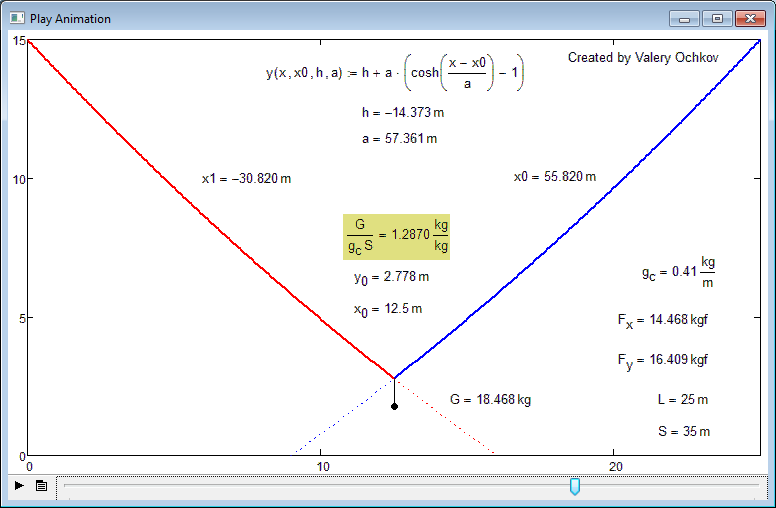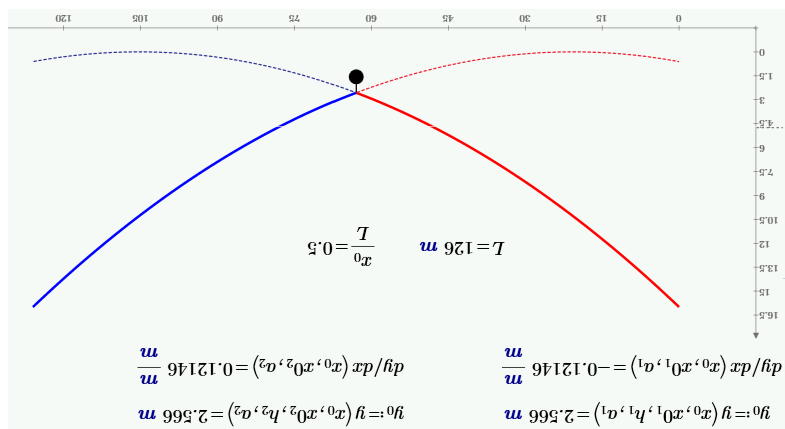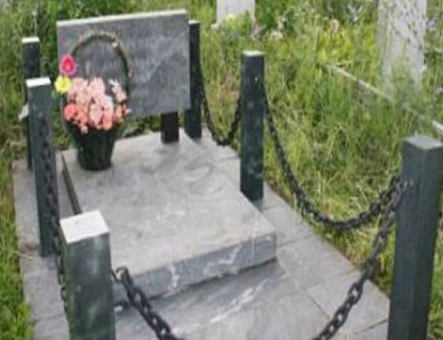Community Tip - You can change your system assigned username to something more personal in your community settings. X
- Subscribe to RSS Feed
- Mark Topic as New
- Mark Topic as Read
- Float this Topic for Current User
- Bookmark
- Subscribe
- Mute
- Printer Friendly Page
One catenary problem
- Mark as New
- Bookmark
- Subscribe
- Mute
- Subscribe to RSS Feed
- Permalink
- Notify Moderator
One catenary problem
The description of the problem is here - http://communities.ptc.com/videos/1549#comment-11596
Help me please! My first step is in attach. Is it any right direction?

Solved! Go to Solution.
- Labels:
-
Other
- Mark as New
- Bookmark
- Subscribe
- Mute
- Subscribe to RSS Feed
- Permalink
- Notify Moderator
AlanStevens wrote:
The units have been set to "none" in the MC15 version - why?. You could switch them on (to SI, say).
Alan
We use m:=1 kg:=1 etc. We can switch units on but better do it off.
See in attach new sheet and more info video. And the picture bellow.
And we must think about the case when H.1 not equal H.2, x.0 not equal L/2 etc.
One fine Russian book on this problem - http://www.twirpx.com/file/357235/
D.Merkin "Introduction to the mechanics of a flexible string" Moscow, Publisher "Nauka", 1980
I see a ne book: PlanetPTC "Introduction to the mechanics of a flexible string with Mathcad" NYC, London, Paris etc, PTC Publisher, 2013

- Mark as New
- Bookmark
- Subscribe
- Mute
- Subscribe to RSS Feed
- Permalink
- Notify Moderator
ALAN STEVENS wrote:
Valery Ochkov wrote:
I think I have one problrms with Given-Find block (CTOL, TOL, etc)
I don't know about TOL and CTOL Valery, but you certainly have a problem with units:
LHS is mass, RHS is force!
Also, this expression (even with corrected units) is only true if x0 is exactly half-way, which, in general, it isn't.
Alan
Actually, this last comment of mine is incorrect - I'm confusing x0 with xsubscript0 here! The units comment is valid though!
Alan
- Mark as New
- Bookmark
- Subscribe
- Mute
- Subscribe to RSS Feed
- Permalink
- Notify Moderator
I think this equation is incorrect:
(Sorry, my image inserting skills need work!
- Mark as New
- Bookmark
- Subscribe
- Mute
- Subscribe to RSS Feed
- Permalink
- Notify Moderator
How about these for proofs of concept (yes that is catenary) and Mathcad solution starting point:
http://www.collectionscanada.gc.ca/obj/s4/f2/dsk1/tape9/PQDD_0001/MQ42229.pdf
http://www.dipmat.univpm.it/aimeta2009/Atti%20Congresso/MECCANICA_STRUTTURE/saitta_paper305.pdf
- Mark as New
- Bookmark
- Subscribe
- Mute
- Subscribe to RSS Feed
- Permalink
- Notify Moderator
Allen Razdow (the author of Mathcad) has said me that in Boston or Cambridge is one building with the walls as cateneries.
I think it is our problem in Australia (two parts of an arch):

You can turn your notebook or tablet in ailartsuA and see a catenary ![]()

- Mark as New
- Bookmark
- Subscribe
- Mute
- Subscribe to RSS Feed
- Permalink
- Notify Moderator
I think it is our problem in Australia (two parts of an arch):
No, but its very often read that the Sidney opera house shells form a catenary. Its not true. The architect Utzon himself had changed the construction using his "spherical solution".
Also the original ceiling of the concert hall consisted of reverse catenaries but the design had to be changed (I think that was made after Utzon left Australia, but I'm not sure about that) because of acoustic problems.
Some readings:
[1] Daryl Dellora, Utzon And The Sidney Opera House, Pinguin Special
Citation from [1]: "This posed the conundrum of what kind of form should be employed for the shells. Should it be an ellipsoid? A parabola? A catenary? Work on this difficult mathematical problem took up thousands of hours of the engineers' time and expertise - a staggering 150,000 hours by February 1962 - and yet after two years they were no closer to resolution. Finally Utzon solved the problem himself: with a unique mix of aesthetics and mathematics, he developed his famous 'spherical solution'.
At its simplest, this meant that every element in each of the shells would be taken from a sphere of the same radius. It followed that the manufacture of these elements could then be done uniformly and cheaply. The spherical solution also carried with it the solution to another perplexing issue, the question of the
shape of the tiles that were to cover the shells. Once the curvature of the shells was determined to be spherical, it followed as rudimentary geometry that the tiles should be square."
Citation from [2]: "The original ceiling consisted of large 'reversed' arches shaped like catenaries hung longitudinally from the external shell [cf: Figure 1]. However, model testing showed that the orchestra area suffered from a deficiency of early arriving sound meaning that the direct sound dominated over the early reverberant sound and the influence of lateral reflections was negligible. Adding suspended reflectors over the stage did not substantially change this situation. It was therefore decided to raise the ceiling substantially and reduce the distance between the side walls."
- Mark as New
- Bookmark
- Subscribe
- Mute
- Subscribe to RSS Feed
- Permalink
- Notify Moderator
When I have worked with this task I have one idea - see http://communities.ptc.com/docs/DOC-4579
What you think about it?
- Mark as New
- Bookmark
- Subscribe
- Mute
- Subscribe to RSS Feed
- Permalink
- Notify Moderator
This is called 'An exhumation of the problem" - see http://communities.ptc.com/message/225463 ![]()

- « Previous
- Next »





